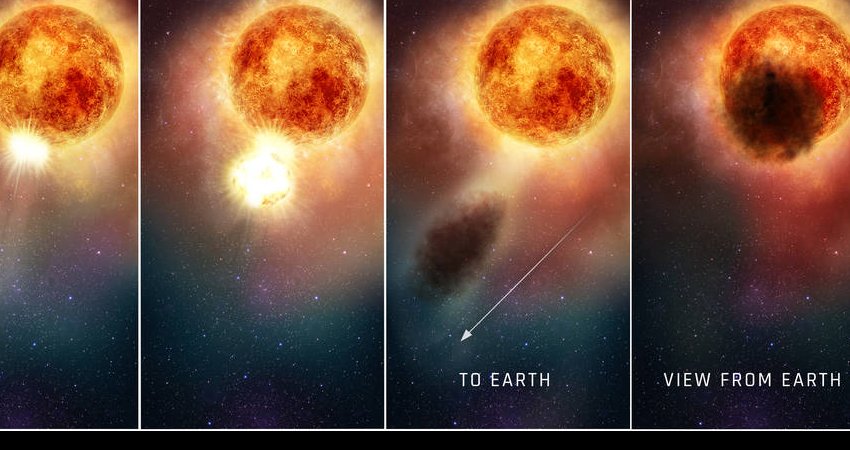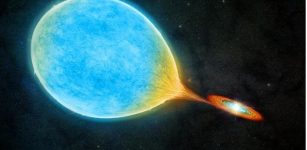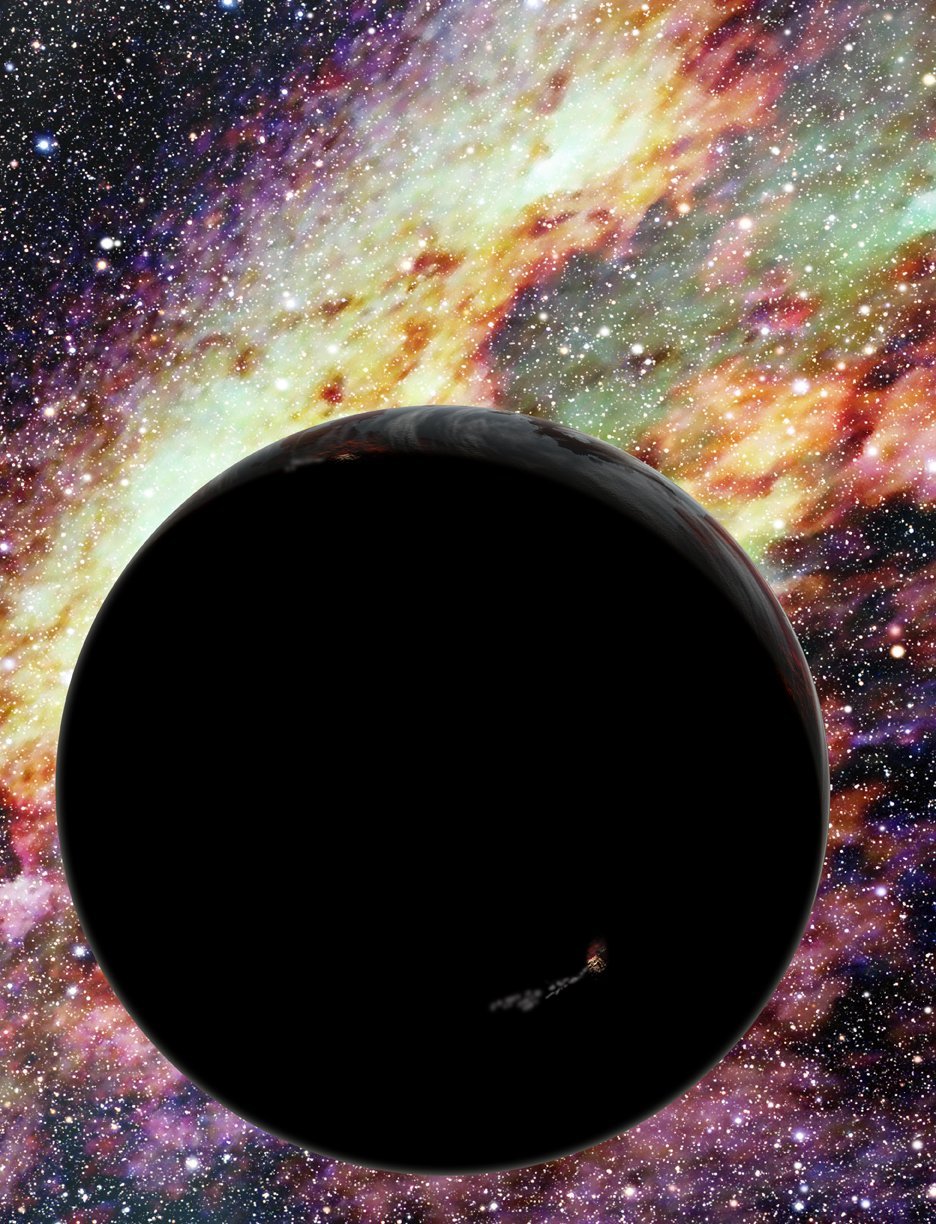Warp-Speed Planets Are Some Of The Fastest Objects In The Milky Way
MessageToEagle.com – Warped planets are some of the fastest objects in the Milky Way and they zoom through space near the speed of light.
Some years ago astronomers were astonished when they found the first runaway star flying out of our Galaxy at a speed of 1.5 million miles per hour.
The discovery intrigued theorists, who wondered if a star can get tossed outward at such an extreme velocity, could the same thing happen to planets.
New research shows that the answer is yes. Not only do runaway planets exist, but some of them zoom through space at a few percent of the speed of light – up to 30 million miles per hour.
“These warp-speed planets would be some of the fastest objects in our Galaxy.
If you lived on one of them, you’d be in for a wild ride from the center of the galaxy to the Universe at large,” said astrophysicist Avi Loeb of the Harvard-Smithsonian Center for Astrophysics.
“Other than subatomic particles, I don’t know of anything leaving our galaxy as fast as these runaway planets,” added lead author Idan Ginsburg of Dartmouth College.
Runaway planet In this artist’s conception, a runaway planet zooms through interstellar space. New research suggests that the supermassive black hole at our galaxy’s center can fling planets outward at relativistic speeds. Eventually, such worlds will escape the Milky Way and travel through the lonely intergalactic void. In this illustration, a glowing volcano on the planet’s surface hints at active plate tectonics that may keep the planet warm. Credit: David A. Aguilar (CfA)
Such speedy worlds, called hypervelocity planets, are produced in the same way as hypervelocity stars.
A double-star system wanders too close to the supermassive black hole at the galactic center.
Strong gravitational forces rip the stars from each other, sending one away at high speed while the other is captured into orbit around the black hole.
For this study, the researchers simulated what would happen if each star had a planet or two orbiting nearby.
They found that the star ejected outward could carry its planets along for the ride.
The second star, as it’s captured by the black hole, could have its planets torn away and flung into the icy blackness of interstellar space at tremendous speeds.
A typical hypervelocity planet would slingshot outward at 7 to 10 million miles per hour. However, a small fraction of them could gain much higher speeds under ideal conditions.
Current instruments can’t detect a lone hypervelocity planet since they are dim, distant, and very rare.
However, astronomers could spot a planet orbiting a hypervelocity star by watching for the star to dim slightly when the planet crosses its face in a transit.
For a hypervelocity star to carry a planet with it, that planet would have to be in a tight orbit.
Therefore, the chances of seeing a transit would be relatively high, around 50 percent.
“With one-in-two odds of seeing a transit, if a hypervelocity star had a planet, it makes a lot of sense to watch for them,” said Ginsburg.
Eventually, such worlds will escape the Milky Way and travel through the intergalactic void.
“Travel agencies advertising journeys on hypervelocity planets might appeal to particularly adventurous individuals,” added Loeb.
MessageToEagle.com via Harvard-Smithsonian Center for Astrophysics
Related Posts
-
 Fast-Moving Gas Flowing Away From Young Star Observed – Rare Detection
No Comments | Dec 8, 2020
Fast-Moving Gas Flowing Away From Young Star Observed – Rare Detection
No Comments | Dec 8, 2020 -
 Collision Course Established: Milky Way – Andromeda In Head-On Crash
No Comments | Jun 3, 2012
Collision Course Established: Milky Way – Andromeda In Head-On Crash
No Comments | Jun 3, 2012 -
 Visibility Of Stars In The Night Sky Declines Faster Than Previously Thought
No Comments | Jan 20, 2023
Visibility Of Stars In The Night Sky Declines Faster Than Previously Thought
No Comments | Jan 20, 2023 -
 Unusual Organisms Living On Pandora – A Fictional Alien World That Could Be Real
No Comments | Oct 27, 2015
Unusual Organisms Living On Pandora – A Fictional Alien World That Could Be Real
No Comments | Oct 27, 2015 -
 Scattered Light Makes The Sky Blue
No Comments | Jan 17, 2016
Scattered Light Makes The Sky Blue
No Comments | Jan 17, 2016 -
 Exotic Clasts In Chang’e-5 Samples Indicate Unexplored Terrane On Moon
No Comments | Jan 3, 2023
Exotic Clasts In Chang’e-5 Samples Indicate Unexplored Terrane On Moon
No Comments | Jan 3, 2023 -
 Human And Machine Intelligence Work Together To Find 40,000 Ring Galaxies
No Comments | Jul 15, 2022
Human And Machine Intelligence Work Together To Find 40,000 Ring Galaxies
No Comments | Jul 15, 2022 -
 Uncovering Mystery Of Dimming Star Betelgeuse – A Dust Cloud May Be Responsible
No Comments | Aug 14, 2020
Uncovering Mystery Of Dimming Star Betelgeuse – A Dust Cloud May Be Responsible
No Comments | Aug 14, 2020 -
 New Type Of Binary Star Long Predicted To Exist – Observed By Astronomers
No Comments | Dec 7, 2021
New Type Of Binary Star Long Predicted To Exist – Observed By Astronomers
No Comments | Dec 7, 2021 -
 3D Infrared Tour of Jupiter’s North Pole – Released
No Comments | Apr 13, 2018
3D Infrared Tour of Jupiter’s North Pole – Released
No Comments | Apr 13, 2018

